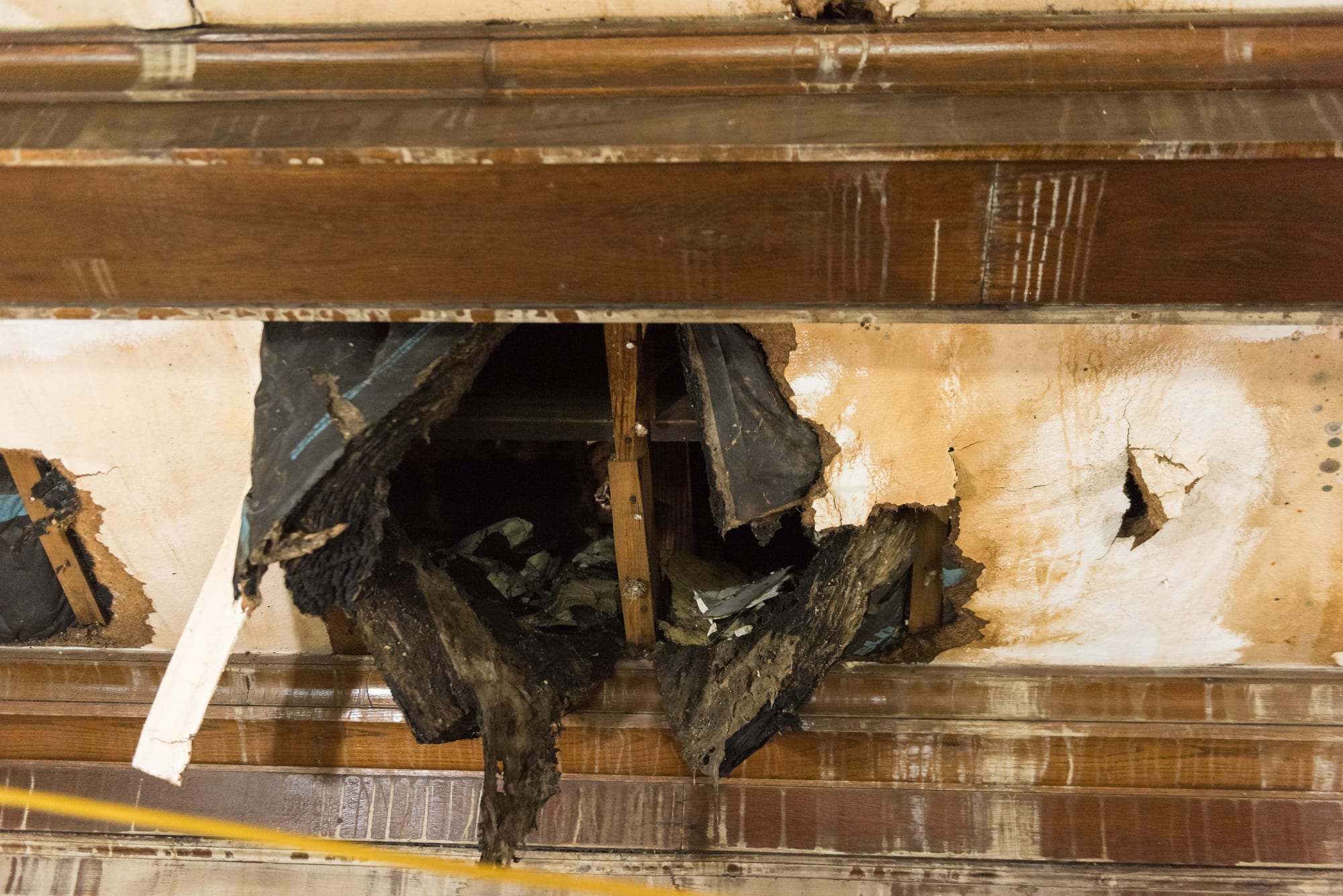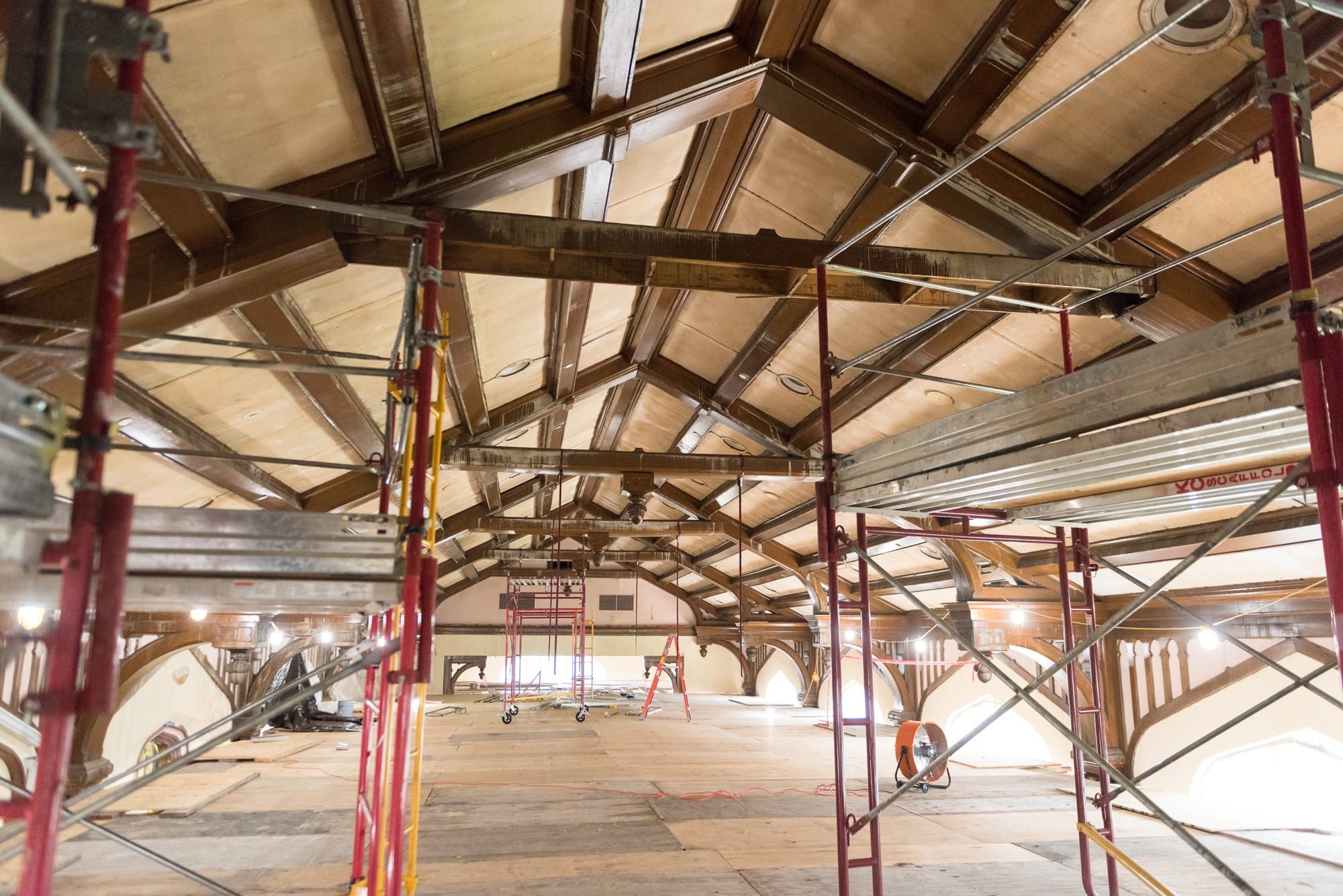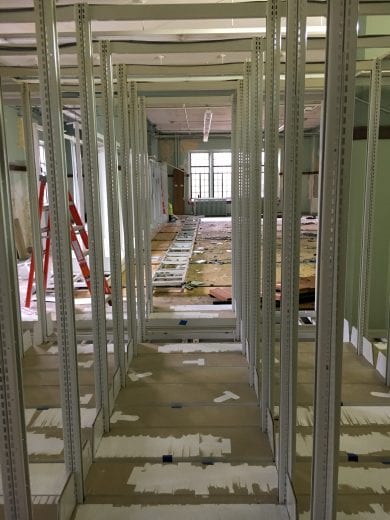Maybe you’ve never seen it. The “We Are the Dream” mural on the fourth floor of Hale Library is not heavily trafficked, but it’s an important record of the struggle of K-State’s underrepresented students to be seen and heard.
“We Are the Dream,” which was sponsored by the Black Student Union, Movimiento Estudiantil de Chicanos de Aztlan (MEChA, a Hispanic student group), and the Native American Indian Student Body, was painted and dedicated in 1980. At that time, it was a striking focal point in the Minorities Resources/Research Center. In recent years, the space has served as the Academic Learning Center, a daytime study location for student athletes.

This summer, the “We Are the Dream” mural was damaged in the May 22 fire, along with the rest of the building. In fact, the Academic Learning Center staff, led by Liane Fowler, assistant director of Student Academic Services, was the first to smell the smoke in their space directly in front of the painting.
Their area is located on the opposite side of the wall from the Great Room Murals, so the two works of art have undergone some of the same challenges. Both suffered from significant water damage and soiling, and it is imperative that the the wall between them dries out. The “We Are the Dream” mural had mold trapped behind it: While the images are beautiful, the paint created a barrier that inhibited the moisture from escaping.

Rachel Gilberti, the chief conservator at John Canning Company, has been working with the damaged mural since June 22, after her company was contacted by Julia Mathias Manglitz, the preservation architect with TreanorHL.
“The ‘We Are the Dream’ mural is painted on burlap that was incorporated in the original 1927 building construction, so that’s been there for a long time,” Gilberti said. “When they made the mural in the early ’80s, they came in and painted over everything that was existing. So, in reality, that surface was never really prepared for a painting.”

“Another challenge is that we have multiple types of adhesives going on behind the burlap. There’s the original adhesive used when the burlap was installed, and over the years, as the seams started coming apart, they started injecting other adhesives on the seams. There are 15 pieces of burlap, so a lot of the seams have a different type of adhesive, and each type reacts differently.”
Gilberti and her conservation associates have removed each section of burlap from the wall, which will allow air to reach the wall behind the painting and dry it out.
The “We are the Dream” mural has been moved in pieces to another floor in the library and spread on tables so the conservationists can clean them.

However, the Libraries administration’s hope that the mural won’t remain in pieces. It will be safely stored by John Canning Company in a climate-controlled space until it can be reinstalled in a clean, renovated Hale Library.
“They are salvageable,” Gilberti said. “Every piece of art is salvageable. It’s not one of those things. Conservators are here for exactly that reason, to salvage the artwork and preserve what the original artist’s intent is. So they will be saved.”
When asked about the “We Are the Dream” mural, Dean of Libraries Lori Goetsch noted that it’s an important part of K-State’s cultural history.
“We love having it as part of Hale Library and look forward to its restoration,” she said. “The fact that this mural celebrates diversity and progress at K-State makes it an important piece of work to be treated with respect and preserved as well as it can be.”

The mural has been an important symbol to many K-Staters over the years. In May 1993, students gathered around the mural to mourn the death of Hispanic activist and leader Cesar Chavez, who is pictured in the painting.
The Kansas State Collegian reported that members of HALO, (Hispanic American Leadership Organization), sang, listened to music and talked about Chavez’s impact on their lives in front of the “We Are the Dream” mural.
Elsa Diaz, the president of HALO at that time, said the mural is significant to minorities on campus because it is the only thing on campus that can give them a sense of belonging. “The mural means a lot to a number of people,” Diaz said. “It is important to people who want to come and worship their heroes.”



































